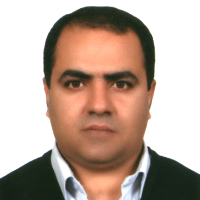Studying of Parthian Coins Existing in the Malek Museum of Tehran
Author(s):
Article Type:
Research/Original Article (دارای رتبه معتبر)
Abstract:
Abstract The coin is a valid and written document and a tiny rich book and the necessity of recognition and its importance in different aspects is important. A coin is a piece of metal of a certain weight on which the official mark of the state or government which shows its weight and cutie is inscribed. Coinage is one of the great human inventions that continued uninterruptedly, and despite political conquests, it continued on its way, creating a strong communication field for people to use common criteria for evaluating their assets, profits, losses and debts. The amount of tax, intra-border and cross-border transactions was calculated by coin. In most ancient Iranian coins, the face of the kings was carved head-on, while in the Parthian period most of the faces of the emperors and kings were carved from side and profile on the coins. Even the long bearded royal and bearded faces are clearly visible on their coins. The image of the ruler is in profile, often to the left and rarely to the right, and in some cases the image of the king is presented in full. In the Malek Museum Collection there are only three coins belonging to the Parthian Period, depicted the King's coin, looking to the right. Numismatics had a great service to mankind in order to clarify the past history. The coin primarily has economic and political importance in any period. Besides it indicates the habits, costumes, script, language, art, religion, civilization, development and the decline of social status. As a matter of fact, it is the source of accurate information about the period in which the coin was minted. Malek Museum is one of the precious and great treasures in terms of numismatics of ancient Persia. The Parthian coins existing in the museum have a special place in this collection. The wide variety of decorative motifs used in the Parthian’s coins available at the Malek Museum contains symbolic and historical religious references and other details that provide scholars with useful information about the culture and its history in ancient Iran. These motifs rely on a rich symbol system. In ancient Iran, during the Achaemenid period, Darius I for the first time minted the famous gold and silver coins that were in full use in the world of that day. This trend continued uninterrupted in the post-Achaemenid period. In the Parthian Era, most coins were minted in silver, copper and other alloys, which are aesthetically and historically valuable. Many coins of this period are kept in the Malek Museum. The purpose of this study was to identify the apparent structure of Parthian coins based on a specimen of the Malek Museum Treasury to identify them. The main purpose of the research is to identify, gather and analyze the decorative motifs on the Parthian Period coins in the Malek museum. Introducing the Malek Museum can be of great help to ancient Iranian Art scholars as it has a relatively rich treasure and gathering this volume of ancient Iranian coins into one collection will shorten the difficult way for researchers to search for it. This research was started with the following question: “How is the relation of the image and content structure of Parthian coins in the Malek Museum with art and history of mintage period?” It is an analytical – descriptive research. So, after visiting the Malek Museum, we collected the relevant information using library sources. Then we introduced and described the Parthian Coins in this collection. Finally, according to collected data, we answered the mentioned questions that are the main stand of the research. As a result, it can be noted that Parthians had craved the image of Arsaces I on the back of dirhams for nearly five centuries (about 248 – 250 BC) because of special love and respect to the founder of the dynasty. The method of collecting field information has been through the use of written, library and other sources such as the World Wide Web.
Keywords:
Language:
Persian
Published:
Journal of Jelve-y Honar, Volume:11 Issue: 3, 2019
Pages:
43 to 52
https://magiran.com/p2068935
مقالات دیگری از این نویسنده (گان)
-
A Hypertextual Interpretation of the Sun Motif in Seljuk Art (Case Study: A Clay Canteen of Seljuk and Parthian)
Aliraz Azizi Yusofkand, Farnoush Shamili *, Mohammad Khazaei, Bahman Namvarmotlagh
Journal of Graphic Arts and Painting, -
A Hyper-Textual Interpretation of the Seven Planets` Motif Design in Seljuk Art (Case study «Enamel bowl» and book of «Aja'ib al-Makhluqat» by Zakariya al-Qazwini)
Alireza Azizi Yousefkand, Farnosh Shomeili *, Mohamad Khazaie, Bahman Namvarmotlagh
Paykareh,


